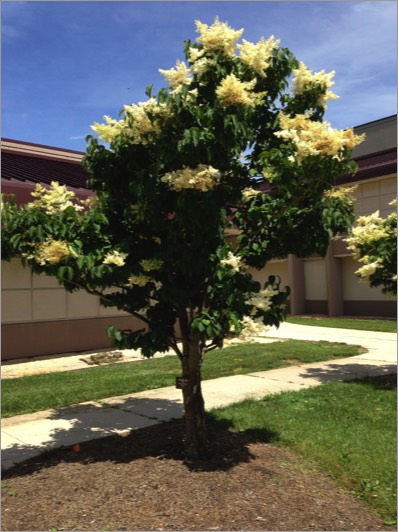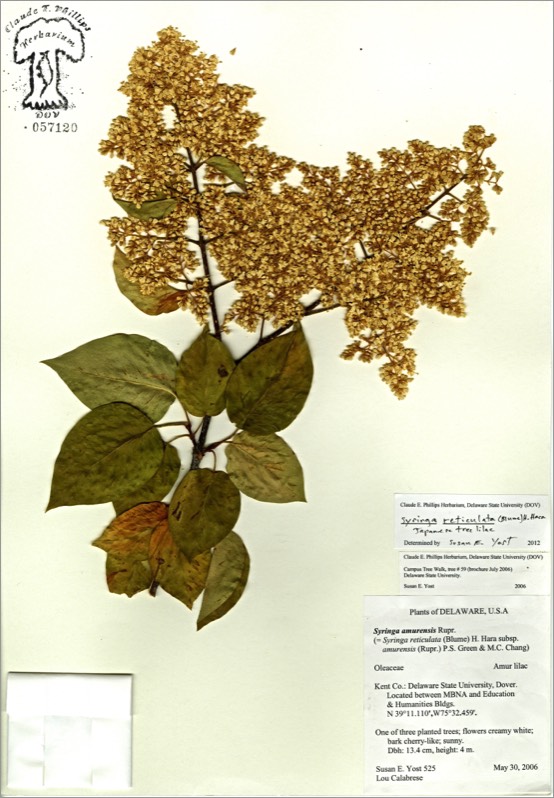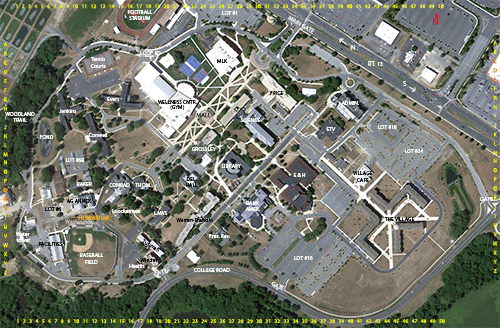*Japanese tree lilac

*Syringa reticulata
JAPANESE TREE LILAC
Oleaceae
Asia
Location: map coordinates Q-32 (near west side of E & H [Education and Humanities] Building), N 39°11'7'' W 75°32'27''
Planting history: presently unknown.
Description:
*Non-native species (not native to Delaware)
JAPANESE TREE LILAC
Oleaceae
Asia
Location: map coordinates Q-32 (near west side of E & H [Education and Humanities] Building), N 39°11'7'' W 75°32'27''
Planting history: presently unknown.
Description:
- small deciduous tree
- etymology: Syringa from Greek syrinx (a pipe) because of the hollow stems; reticulata = network
- leaves simple, opposite; leaf base rounded
- flowers creamy-white, in large, dense, upright clusters (panicles); scented like privet (displeasing to some). Flowers in early summer, later than common lilac
- fruit dry, brown capsule
- prefers full sun, moist soil; tolerates urban conditions; an easy lilac to grow
- somewhat resistant to mildew which is common in common lilac (Syringa vulgaris)
*Non-native species (not native to Delaware)


HIT REFRESH TO START LOCATION GRAPHIC